Chronicles of mental travel. Interesting news from around the world
Palmyra is an ancient city in the Tadmor oasis of the Syrian Desert, 240 km from Damascus.
Palmyra, or rather, its ruins, are the most popular among all the numerous monuments of Syria.
People chose the place for this city not by chance. On the long caravan route from the sea to the Euphrates, only here do water springs break through among barren stones and sand. Archaeologists have established that a settlement has existed here since the 3rd millennium BC.
History of Palmyra

Triumphal Arch – business card Palmyra
The first mention of Palmyra (under the name Tadmor) is contained in the Babylonian cuneiform texts of the 19th century. BC. Now this name is given to an Arab village located nearby. According to the Bible and Josephus Flavius, Palmyra was founded by the Israeli king Solomon.
By the 1st century AD Palmyra became the largest trading and cultural center. Caravans from Arabia, Persia, India and other countries stopped here for rest. A rich city has always attracted those who were looking for profit. Under the emperor Tiberius, the city of Tadmor received the name "Palmyra", which means "City of Palms". Under the Romans, the city prospered, and then the Syrians began to rule it, who also made a lot of efforts to develop the city. The peak of Palmyra's power dates back to the II-III centuries.
The most famous and powerful ruler of the Palmyra kingdom was Zenobia. She declared independence from Rome, but soon her troops were defeated, and she herself was captured. In 274, during the triumphal procession of Aurelian, Zenobia was carried through Rome in golden chains. After that, she lived in the estate of Tibur (modern Tivoli) near Rome.
"Zenobia in chains" (circa 1859). Sculpture by Harriet Hosmer
Zenobia is an educated, ambitious and powerful woman of extraordinary beauty, a brave warrior and an excellent rider. Under her Palmyra turned into a magnificent capital of the East with magnificent temples, poets, scientists, artists and sculptures came here.
But in 271, the Roman legions laid siege to the city, Palmyra capitulated - its slow dying began. First, the Roman emperor Aurelian staged a pogrom in the city, and then the Roman garrison was stationed here. Under Emperor Diocletian (border of the 3rd-4th centuries), defensive construction was carried out here: on an area of 30,000 square meters. km is the camp of the Roman troops.
Under the Byzantines, Palmyra still existed as an insignificant border point, and under the Arabs, it fell into complete decline. The former greatness of Palmyra was gradually covered by the sands of the desert...

On the highest of the hills rises the Arab fortress Qalaat al-Maani, built in the first half of the 17th century.
The ruins of Palmyra were accidentally discovered in the 17th century, and the first scientific expeditions began only in the 2nd half of the 19th century. The excavations of Palmyra began in 1920.
At present, on the site of Palmyra, the ruins of majestic buildings, belonging to the best examples of ancient Roman architecture, are a UNESCO World Heritage Site. Colonnades and monumental arches rise along the main street of ancient Palmyra. The most significant buildings are the temple of Baal (1st century), the temple of Baalshamin (2nd century), the agora (3rd century), a theater with a community center and a caravanserai.
In May 2015, ISIS took over Palmyra. Many monuments that were not taken away were looted and destroyed.
On March 27, 2016, the Syrian army, with the support of the Russian Aerospace Forces, liberated Palmyra.
Work begins on the restoration of the city.
Temple of Baal (Bela) in Palmyra
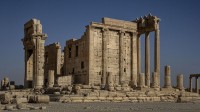
Author: Sasha Isachenko - own work, Wikipedia
This temple is dedicated to the local supreme god Baal, the lord of the sky, thunder and lightning. The temple was the main shrine of the city. Destroyed in 2015 by militants of the Islamic State terrorist group: an explosion on the territory of the temple almost completely destroyed its center.
The temple in terms of architecture was a kind of hybrid of Eastern and ancient architecture: its layout was made in the style of the temples of the Middle East, and the facades were modeled after Greek and Roman temples. Built in 32 AD. e. - This is one of the oldest buildings in the city and the largest. The vast complex consisted of a courtyard surrounded by a fence, ritual pools, altars and the temple itself.
Inside the temple was a large hall, not separated by colonnades or walls. Light entered it through rectangular windows located almost under the roof itself. In the center of the end walls in huge niches were statues of the gods.

Inner Hall
Temple of Baalshamin
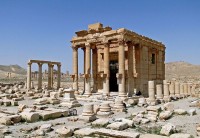
Author: Bernard Gagnon - Own work, Wikipedia
The second most important temple of Palmyra was the temple dedicated to the deity Baalshamin. He was called the lord of heaven, sending rain. The temple was built in 131, it was a typical Roman building with a deep 6-column portico. Previously, the columns were decorated with sculptures.
With the spread of Christianity in the 5th c. the temple was turned into a church. It was discovered by Swiss archaeologists in 1954-1956. In 2015, ISIS was destroyed.
Temple of Nabo
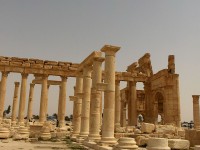
The Syrian god Nabo is an analogue of the Greek Apollo. The Temple of Nabo was built in the 1st century. AD It has a rectangular shape, surrounded by a colonnade. The walls of the porticos were decorated with paintings. From this temple, only a high podium with a staircase has been preserved.
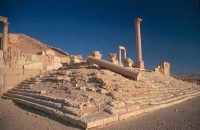
Other buildings of Palmyra

Theatre. It is not as big as other ancient theaters, but it is distinguished by its exquisite decoration.
Next to the theater is the entrance to the agora (a rectangular square that served as a market), which is also destroyed.
Agora surrounded by structures of various sizes. One of them, with massive walls and wide doors, is believed to have been a caravanserai. Caravanserais were similar to modern hotels, with the provision additional services: food, baths, money exchange offices, etc.
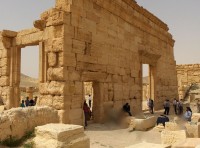
Local market next to the agora
Opposite the temple of Nabo rise the ruins of huge term, which are not inferior to the famous Roman baths in their decoration and size. But only a portico with monolithic porphyry columns and a rectangular pool survived from them, into which they descended by a stone staircase. Part of the water supply that came from the source has been preserved.
It was believed that these were the baths of Diocletian, but archaeologists found that under Diocletian the baths were only reconstructed, but they were built 100 years earlier.
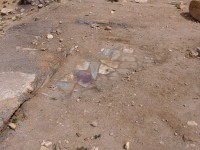
term detail
burial towers
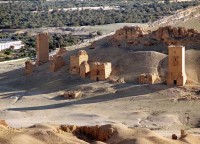
Half-ruined towers rise on the slopes of the hills surrounding Palmyra. This is an urban necropolis, many ancient tombs have been preserved here. There are no similar burial structures in other regions of Syria.

The ruins of Palmyra with its columned streets, basilicas, altars and tombs can be considered a classic example ancient city. But time was merciless to him. And although the ruins of Palmyra became known to the whole world and were appreciated, and many bas-reliefs and sculptures are in best museums world, Palmyra has again become an object of profit and barbaric destruction of the militants of the terrorist organization ISIS.
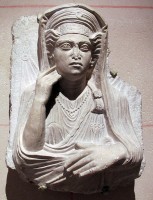
Sculpture from Palmyra (France)
Famous sites in Palmyra
A story about the amazing history of the city of Palmyra and the fate of its sights. What was destroyed? Is a renovation planned?
Between Damascus and Euphrates is a small Syrian village with the proud name of Palmyra. Now there is practically nothing in it that betrays its former grandeur, except for the yellowed ruins of the great city, which was once located on this very spot.
The fate of Palmyra is fascinating and tragic. It was repeatedly ruined and demolished to the ground. Last time happened last year when she became a victim of militants from the banned Islamic State in Russia.

History of Palmyra
The date of foundation of the city is not exactly known, but its history goes back thousands of years. Palmyra is mentioned a couple of times in the Bible, and according to historians, the first settlers appeared here at the turn of the first half of the second millennium BC. Solid age. Palmyra has seen everything in her lifetime. And mass executions of hostages, and endless wealth, and prosperity. She owes the latter to her successful geographic location. For a long time, Palmyra has been a coveted oasis and a long-awaited stop on the way of caravans slowly wandering through the endless desert.
Disadvantages often become a continuation of merits. So it happened with Palmyra. Its favorable location attracted not only travelers and merchants, but also dangerous opponents. Many empires tried to capture this city and some even succeeded. After the peak of its power, Palmyra for many years becomes a place of constant showdowns between the Romans, Parthians, Persians and local residents. It ended with the city losing all its trading achievements and slowly dying away.
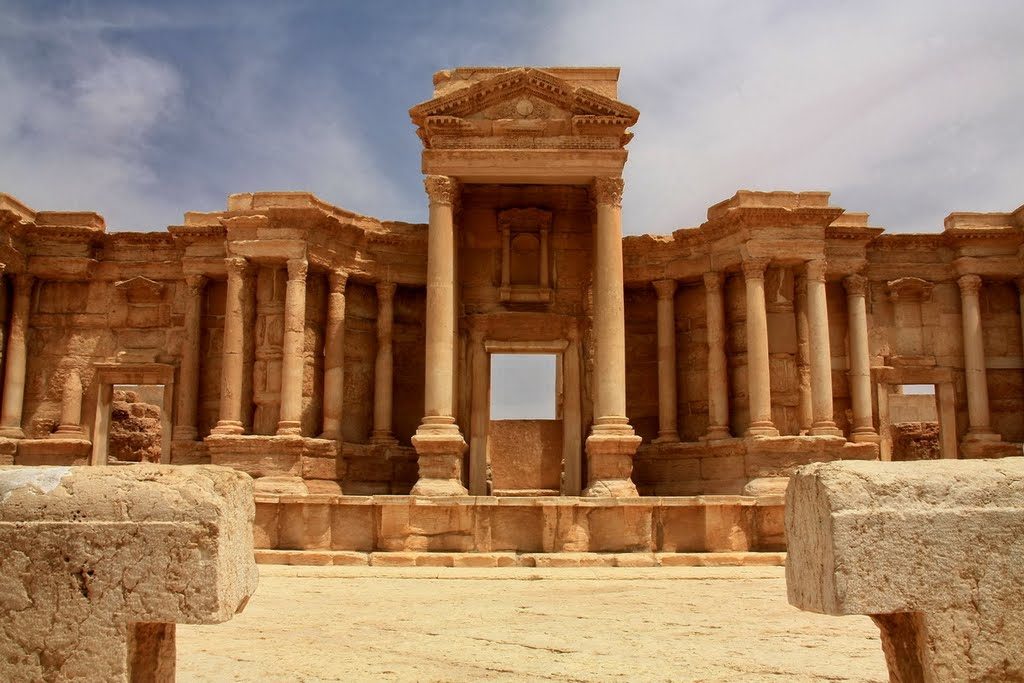
The Arabs put an end to it, who in 744 subjected the city to destruction and ruin. Palmyra was not destined to recover from this blow. In 1089 there was a powerful earthquake that finally turned the city into ruins. The ruins of magnificent temples were slowly covered with sand, and the inhabitants who remained here dismantled majestic buildings for their personal needs. So the city for a long time disappeared from the field of view of human history.
Again in the public space, Palmyra was remembered only at the beginning of the 17th century. At this time, the famous Italian traveler Pietro della Balle stumbled upon its remains. His stories about dead city attracted new adventurers to these places. Many of them made sketches that have survived to this day. By the end of the 19th century, the first photographs of Palmyra appeared. Comparing all these materials with what is available to mankind now, researchers are horrified. The last couple of hundred years have dealt a crushing blow to the remains of the city. Many monuments of ancient architecture are lost forever.
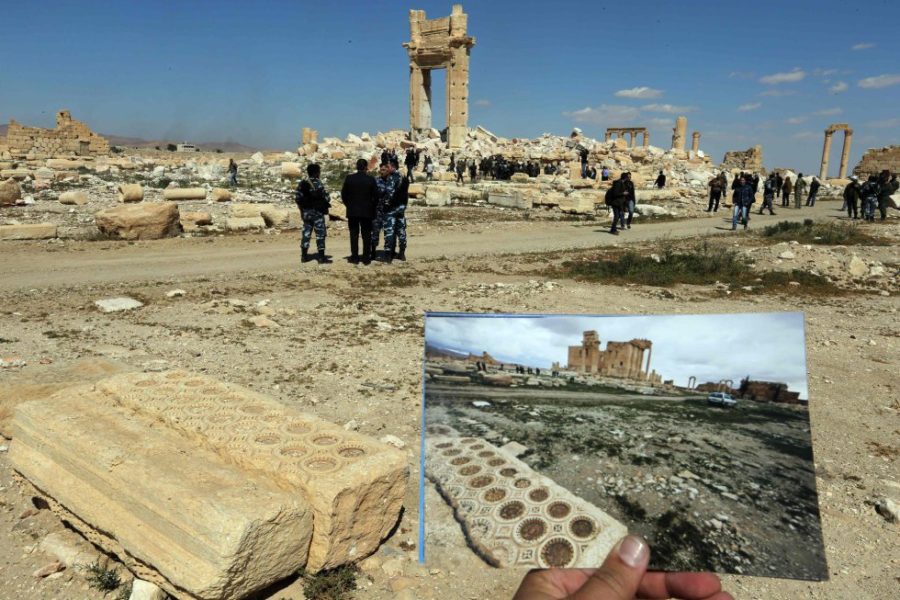
Sights of Palmyra
Prior to the start of the Syrian civil war, Palmyra was especially famous for several of its attractions.
Triumphal Arch in Palmyra
Visiting card of the city. It was built in the second century AD and is well preserved. She is familiar to Russian citizens, since her image is placed on one of the school history textbooks. Unfortunately, we won't see her again. This symbol of human culture was blown up by militants.
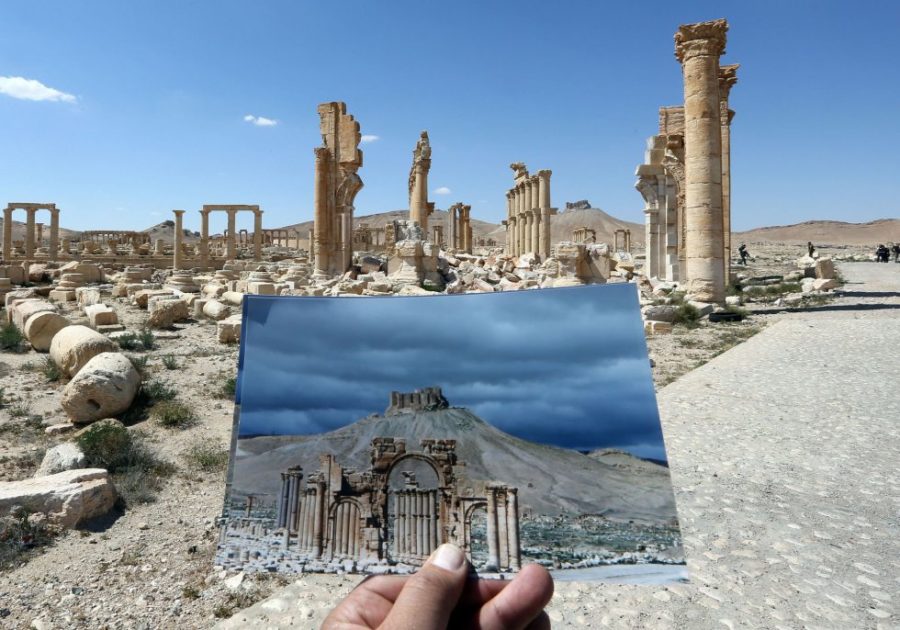
Temple of Bel in Palmyra
The main shrine of the ancient city was built in 32 AD. Until recently, the majestic ruins of this temple were considered one of the main attractions of Palmyra, but in August 2015, ISIS militants blew up the structure.

Temple of Baalshamin in Palmyra
This place of worship was built in 131 AD. Its discovery is associated with the activities of Swiss archaeologists in 1954-1956. Alas, this temple was also destroyed during the presence of militants on the territory of Palmyra.
In addition to the attractions listed above, before the war, tourists were pleased with the well-preserved colonnade, amphitheater, agora (marketplace), the remains of fortress walls and other urban structures. In what state the city is now, it is rather difficult to say. Because he has only recently been released. Accurate data on irreparable cultural losses for humanity have yet to be assessed. It is known that some important items were evacuated from Palmyra before the occupation. But it was impossible to save the whole city.
A plan for the reconstruction of Palmyra has recently been presented. It consists of three stages:
- Strengthening damaged buildings and preserving them from further destruction;
- Restoration of most of the monuments on the territory of Palmyra;
- Restoration of famous landmarks that have been irretrievably lost. In particular, the triumphal arch, the temples of Bel and Baalshamin will be rebuilt.
According to experts, the restoration of the city will take about five years. It is also known that their colleagues from the St. Petersburg "Hermitage" will help the Syrian scientists.
look documentary about the city of Palmyra attractions
Relations between the mother country and the colony deteriorated in the 2nd half of the 3rd century. In 260 Sasanian Shah Shapur I under Edessa defeated the Roman legions and captured Emperor Valerian. The remnants of the Roman army asked for help from the Palmyrenes. semi-independent ruler Odaenathus not only repulsed the attacks of the Persian army, but also went over to an open offensive and advanced up to Ctesiphon. The winners got a lot of trophies. In 262 a new Emperor of Rome Gallienus appointed Odaenathus as leader of the Roman legions in Asia and in fact the second man of the empire. Palmyra kingdom(or Palmyrene) has turned into a serious force on Middle East. Such a strengthening of yesterday's colony could not but disturb the weakened, but still huge Roman Empire. Odenathus, using the current situation, began to pursue an independent policy. To eliminate a dangerous ally, the Roman emperor resorted to the old method. Odenathus and his son Herodiana in 267, ostensibly for negotiations, they were invited to Emessu where they were killed. Thus, in fact, the young son of Odaenathus from his second marriage became the rulers. Vaballat and wife of the deceased Zenobia. Some sources accuse this woman of participating in the insidious murder of her husband and stepson. Emperor Gallienus believed that the baby and the widow would not be able to conduct an independent policy. However, the most educated woman of her era, Zenobia declared her son the ruler, and herself his regent. The troops also swore allegiance to the princess Palmyrenes. For 3 years Syria, Egypt, Palestine and part of Asia Minor were captured by the Palmyrene army. New Emperor of Rome Aurelian was not going to accept the situation. In 270, his eastern campaign begins. Defeated at Emessa, Zenobia decided to flee to Persia, but in 272 she was captured and sent as a prisoner to Rome. Palmyra fell before the victors. The uprising of 273 was also mercilessly suppressed. The city continued to flourish for some time. However, the local population did not accept defeat. The uprisings have resumed. The Romans this time sacked the city and left it to its fate. The intelligentsia began to leave Palmyra. Their example was followed by merchants and artisans. The city was deserted and forgotten. The Arabs who came here in the 7th century were not at all interested in the history of the territory they conquered. The situation remained similar after the capture of Syria. Ottoman Empire . Only thanks to the records of European explorers and travelers of the 17th-18th centuries, the world learned about the ruins of a beautiful city in the middle of the desert. And those that began in the 20th century archaeological excavations, allowed to study in more detail the history, culture and lifestyle of the inhabitants Palmyra.
The population of the city was originally Semitic. However, the development of trade, the arrival of merchants from different regions, repeated seizures by neighbors contributed to the formation of a multinational and multilingual ethnic group. However, the skeleton is still preserved. Aramaic inscriptions on the columns, dating back to the 3rd century, confirm this. No less curious was the situation with the religion of the population. in the religious pantheon Palmyra amazingly, the gods coexisted peacefully different peoples: local supreme god of the sun Baal(Bel), Babylonian Nabo, Phoenician Baalshamin, thunderer Zeus, goddess Allat and other deities. A temple was built for each of the gods, in which religious rites were held. The chief was at the head of the city. In managing the city, he was assisted by priests and representatives of the highest stratum, who were members of the local council. In the Roman era, state affairs were in charge of the governor appointed from the capital of the empire. Under Adrian, Palmyra gained some freedom in domestic politics, and the Roman representative was recalled back.
As for architecture, traces of the work of different peoples and eras can be traced here. Despite the fact that only the ruins of the ancient city have come down to us, the inscriptions on the buildings and columns tell about all the historical processes that have taken place throughout existence. Palmyra. Ruins Tadmora stretched up to 3 kilometers from the southeast to the northwest. Some of them belong to the era of the invasion Babylonian king Nebuchadnezzar II, and the other part belongs to the first centuries of our era. In the eastern side of the city are the ruins of the temple of the sun god Baal. In front of the temple rose a gate that vaguely looked like a triumphal arch of the Romans. From the temple to the end of the city, a road was laid over a kilometer long. The entire area of Palmyra is divided by many columns (more than a thousand) into 3 sectors, in which various strata of the population lived. Only 150 of them have survived to this day. Inscriptions in Aramaic, Greek and Latin confirm the version of the internationality of the city. The council building and the local theater were located in the very center in close proximity to each other. The remaining architectural buildings (temples, palaces, baths) have been preserved in a state less suitable for study.
To date Palmyra is considered not only a national treasure of Syria, but also a world treasure UNESCO. The ruins of the city are annually visited by tourists from all over the world. Inspired by the ruins "Pearls of the Middle East" Russian travelers even call St. Petersburg their "Northern Palmyra". Some portable copies are kept in historical museums. different countries. Today, a plan is being developed for the restoration of the ancient city.
The first mentions of Tadmore belong to the 2nd century. BC.
AT Old Testament it is claimed that Tadmor was rebuilt by King Solomon after being destroyed by the Assyrians. There is a legend that Palmyra Jinn were built for Solomon. "Tadmor", which means "to be wonderful". Indeed, the city, surrounded by yellow sands and hills, was a magnificent continuation of nature.
In the 1st century BC Tadmor was not part of the Roman Empire, Rome preferred to have a buffer zone between itself and the Parthian kingdom.
Mark Antony, who received control of the eastern regions of the Roman Empire, in 40 BC. plundered the city - he was in great need of money, an affair with Cleopatra required a lot of spending.
Under Tiberius Tadmor obliged to pay tribute to the Roman legate. During this period, the city began to be called Palmyra – "City of Palms".
In 129 Adrian visited the city and gave the name Adriana Palmyra, as well as the rights of a free city.
In 183 Palmyra became a Roman colony, but in 261 the emperor Gallienus granted her independence as a token of gratitude to Odaenathus, the ruler of the city, who defeated the Persians.

It was the dawn for Palmyra. But in 268, after the death of her husband, Queen Zenobia comes to power, becoming regent for her son. The queens attributed the death of her husband and his son from their first marriage.
Zenobia - an educated, ambitious and domineering woman, of extraordinary beauty with matte skin and black eyes, an excellent warrior and an excellent rider, was hostile towards Rome.
Continuing the aggressive policy of her husband, she invaded Asia Minor and Egypt. Palmyra turned into a magnificent capital of the East with magnificent temples, poets, scientists, artists and sculptures came here.
But Rome did not like this turn of events. And in 272, the emperor Aurelian defeated the troops of Zenobia under Emesa. Palmyra surrendered after the siege. The queen was put in chains and sent to Rome, where she was led through the streets behind the chariot of Aurelian. Until the end of her life, Zenobia was imprisoned at the Villa Tivoli near Rome.
More than once in Palmyra uprisings broke out against the power of Rome. But the empire could not lose such an important strategic point.
But gradually Palmyra lost its significance, turning into an ordinary provincial city.
In 634 the city became Arabic. Around Palmyra castles grew. And the Umayyads finally destroyed the city.
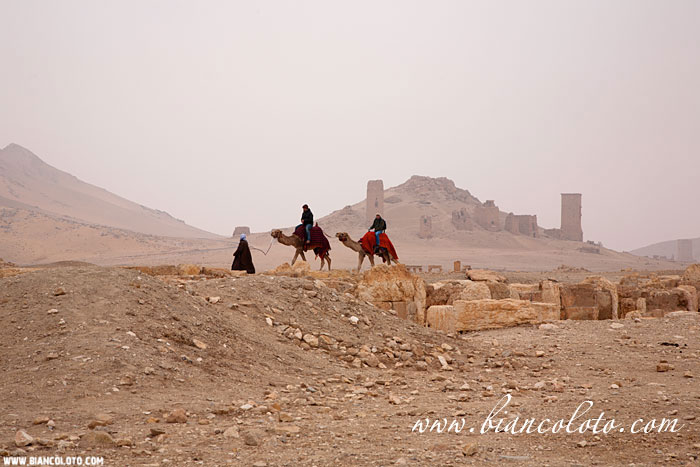
For Europeans Palmyra opened only in 1678 by English merchants. This revived interest in ancient Tadmor.
In Russia, the courtiers compared Catherine the Great with Zenobia, and after that they called St. Petersburg "Northern Palmyra".
Later, among the ancient ruins, shacks of local residents appeared, who partially plundered and partially destroyed the ancient buildings. During the French occupation, the shacks were demolished and Palmyra began to restore and restore. Excavations are still ongoing, but a significant part of the city is hidden under the sand.

Palmyra was included in the UNESCO World Heritage List.
Now on an area of 6 sq. km there is the Bela (Baala) temple complex, a large Colonnade decorated with inscriptions glorifying the legendary Queen Zenobia, baths, a theater, a triumphal arch, the ruins of ancient residential buildings, a valley of tombs with unique burial places and several dozen burial towers.
A general ticket that gives access to all monuments and the archaeological museum costs 500 SP.
The museum is open:
Summer 8.00-13.00 and 15.00-18.00
Winter 8.00-13.00 and 14.00-16.00
Ramadan 8.00-15.00
Day off - Tuesday.
The largest building Temple of Bel.

Bel was identified with the Roman god Jupiter. The temple is one of the ancient buildings of the city, which was built under the emperor Tiberius in 32. It was a temple complex consisting of a spacious courtyard surrounded by a colonnade, pools for ritual ablutions, altars and a temple.
The temple rises on a podium, to which wide steps and gentle ramps lead, intended for sacrificial animals.
It is not typically Roman or Greek. The transverse orientation of the temple (the entrance is located in a long longitudinal wall), a spacious entrance, a cornice decorated with triangular teeth, and a roof in the form of a terrace with turrets are more characteristic of Syrian structures.
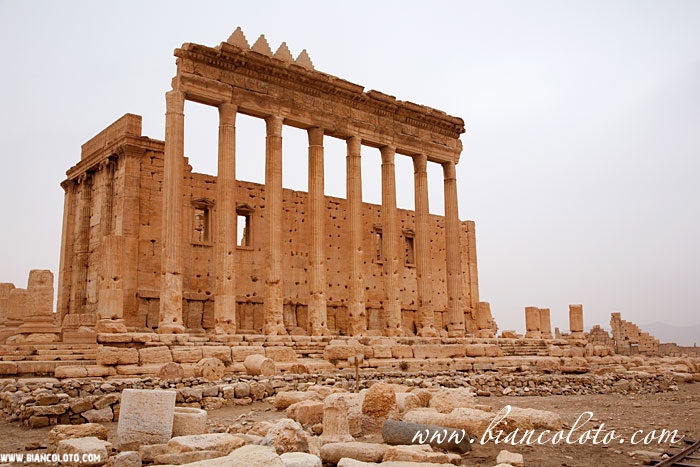
Inside the temple is divided into three rooms.
In the niches to the left of the entrance stood the statues of the Palmyra triad of gods: the supreme god Bel, the sun god Yarihbol and the moon god Aglibol. This niche is made in the form of a Syrian tent. On the ceiling is an image of the seven planets, surrounded by the signs of the Zodiac. In the center is an image of Jupiter.

On the right side, in a niche in front of which a wide staircase was preserved, there was a golden statue of Bel. There is an exquisitely carved rose in the niche ceiling.


Bas-relief with temple columns and moon god Aglibol. Palmyra. Syria.
Under the Arabs, a mosque was located in the temple, and the adobe shacks of local residents stuck around the sanctuary.
Across the road from the temple is the old city.
At the beginning - Triumphal Arch is a business card Palmyra, it is depicted on the banknote of 100 Syrian lira, on the entrance ticket, on many postcards.


Fragment. Palmyra. Syria.
The arch was restored in 1930, it is triangular in plan, this was done in order to hide the turn of the main street (Roman streets must be straight). Thanks to this technique, the arch from all sides seems to be perpendicular to the street. The height of the arch, made of basalt, granite and marble, is 20 meters.
Great colonnade bordered the main street of the ancient city - the decumanus, which went strictly from east to west and led from the funeral temple to the temple of Bel. A large colonnade often adorned ancient Roman cities, but rarely has it been so well preserved. Its total length reached 1.1 km, the width of the carriageway was 11 m.
On both sides of the street with the Great Colonnade were covered porticos of yellow sandstone, white marble-like limestone and imported pink Aswan granite.
At the intersection of the streets stood tetrapylon.

Tetrapylon. Palmyra. Syria.
Numerous streets with houses and shops adjoined the Great Colonnade. Along the street there is a sewerage system and a water pipe made of clay pipes, which supplied houses and shops with water.
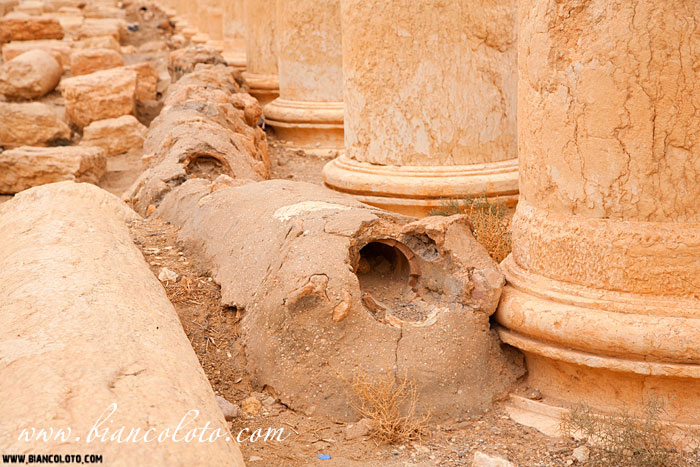
AT Palmyra one of the most beautiful theatres.
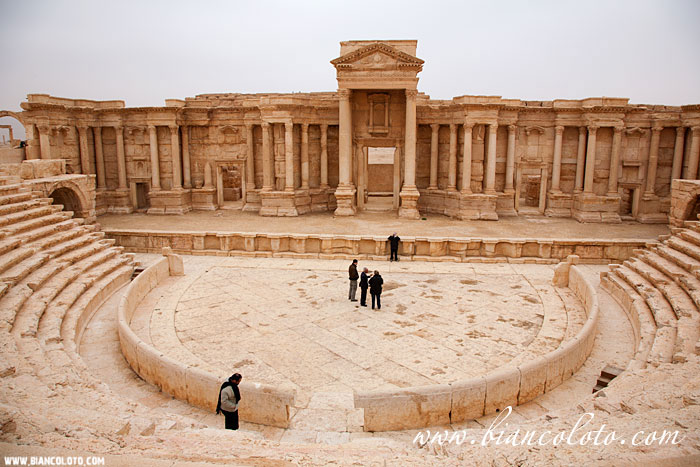
Theatre. Palmyra. Syria.
The theater was excavated from the sand in 1952. Thanks to sand cushions, it was well preserved, but the restorers got too carried away and modernized it, surrounding it with a wall and adding additional details. The theater belongs to the II century.
On the right side, it adjoined the Senate building and went out onto a square square surrounded by porticos. Next to the Senate was a market square - agora.
AT Palmyra there were many temples and religious buildings dedicated to various deities: Hadad, Nabo, Ishtar, Arsu and Aziz - the patrons of caravaners.
But, in addition to the temple of Bel, almost completely preserved only temple of baalshamin.

The Temple of Baalshamin was consecrated in 131. This small temple is very harmonious and has perfect proportions. Baalshamin is the god of rain and thunder.

Palmyra.
Outside the city among the sandy hills spread necropolis. The turrets of the tombs rise to a height of 20 meters.
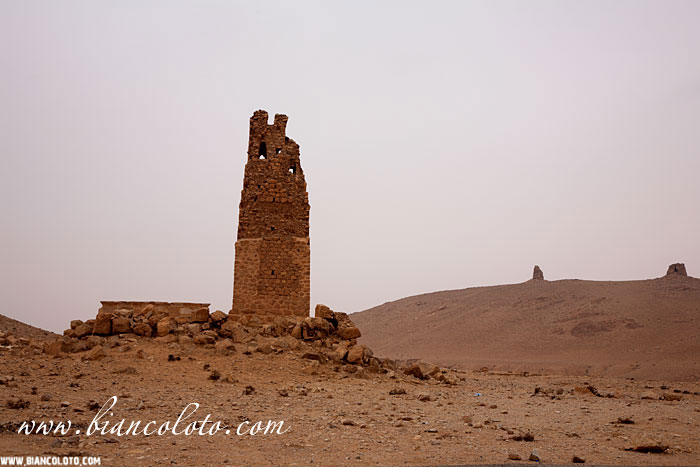
The towers are built from sandstone. Above is a small balcony where a statue of the head of the family was put up. On the lower floor of the tower was a tomb: deep niches for coffins with mummified bodies. The niches were covered with slabs with a relief image of the deceased. On the top floor there was a shrine to the ancestors.
Of all the tombs of Palmyra, two are best preserved - Iamblikha and Elabela.

Iamblich Tower was built at the end of the 1st century. On the first floor there is a burial place. The ceiling is decorated with painted reliefs depicting stars and four busts of the owners of the tomb.


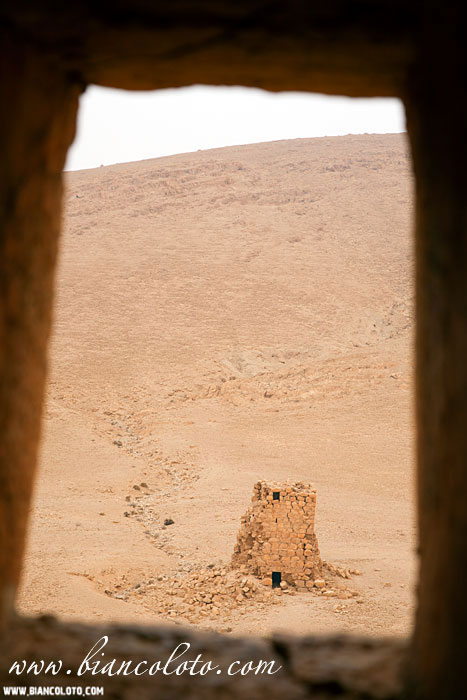
From the middle of the II century began to build underground crypts - hypogea. The most interesting hypogee tomb is the crypt of the Three Brothers. A wide staircase leads down, a cruciform room decorated with ornaments and frescoes. The tomb was built by three brothers - Naaman, Male and Saedi and is designed for 390 burials. Despite the fact that the tombs were built for themselves, they were also an investment - the brothers sold the places in the tomb to other families at a higher price.
On the highest of the hills rises the Arab fortress Qalaat al-Maani, built in the first half of the 17th century.
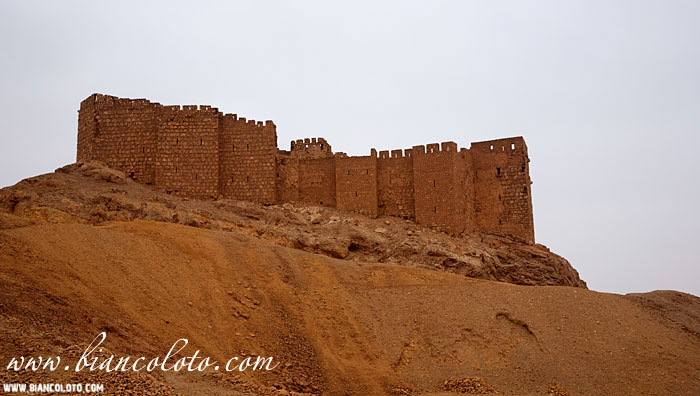
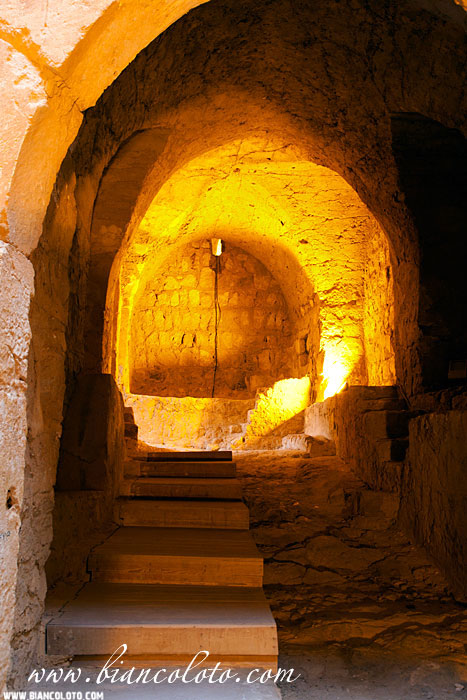

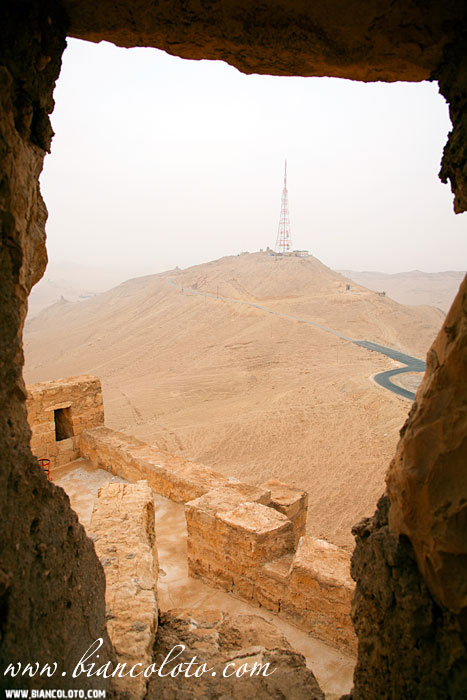
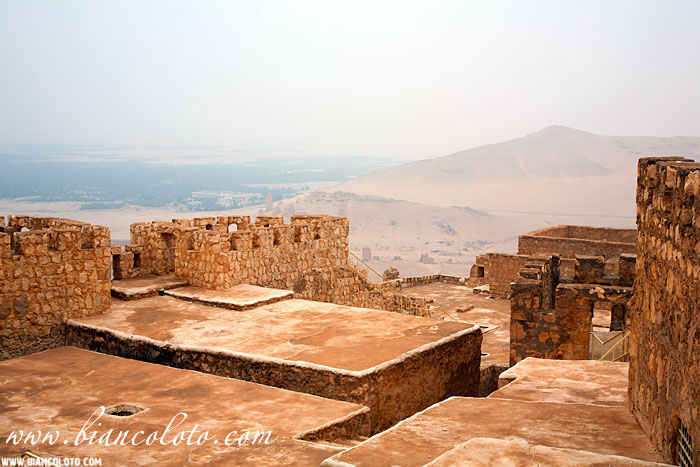
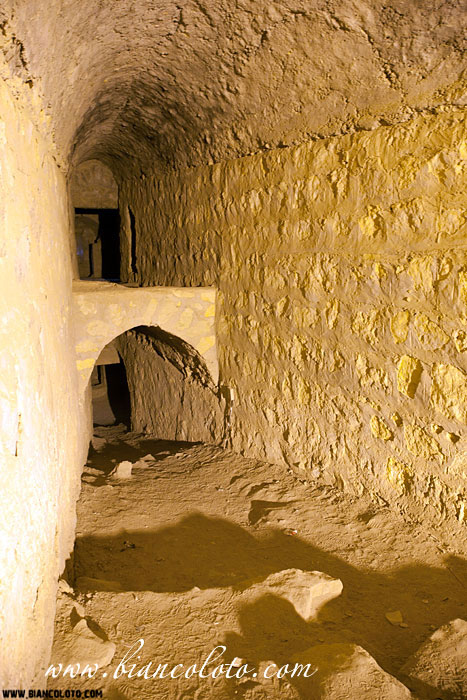
From the hill overlooking Palmyra.

The first mention of this city dates back to 900 BC. Palmyra was ruled by the most famous kings of antiquity to this day. There were uprisings, the collapse of empires, intrigues and many other significant historical processes. The architecture of ancient times has survived to this day and is truly unique. However, in 2015, the remains of the ancient city were destroyed by Islamic State terrorists.
ancient times
The antiquity of the city can be estimated at least by the fact that the Bible contains a description of such a fortress as Palmyra. Syria at that time was not a single state. Various kings and tribes ruled over its territory. A well-known biblical character - King Solomon - decided to found Tadmor (the former name) as a fortress to protect against Aramean raids. The place was chosen at the crossroads of trade routes. But soon after the construction, the city was almost completely destroyed as a result of the campaign of Nuavuhodnosor. But the extremely favorable location prompted the new owners to rebuild the settlement. Since then, rich merchants and nobles have constantly arrived here. In a short time, from a village in the desert, Palmyra turned into a kingdom. ![]()
Rumors of untold riches spread even throughout Europe. I myself learned that near the Euphrates valley there is an indescribably beautiful city of Palmyra. Syria at that time was partly controlled by the Parthians, who were at war with Rome. Therefore, the imperial troops decided to take the city, but these attempts did not lead to success. A few years later, the commander from the Antonin dynasty nevertheless took Tadmor. Since then, the city and its environs have become a Roman colony. But local rulers were given extended rights that were not in other conquered lands.
greatest power
The struggle for these territories was much wider than control over the province of Palmyra. Syria is a third of the desert, which is impossible to inhabit. Therefore, control over this area depended on the capture of several stronghold nodes. Whoever controlled the region between the sea and the Euphrates valley had influence over the entire desert. Since the city was very far from the central Roman lands, there were often uprisings against the capital. One way or another, Palmyra has always remained a relatively independent province, following the example of the Greek city-states. The peak of power came during the reign of Queen Zenobia. Merchants from all over the Middle East traveled to Tamdor. Luxurious temples and palaces were erected. Therefore, Zenobia decided to completely get rid of Roman oppression. However, Aurelian, the Roman emperor, reacted quickly enough and went with the army to distant frontiers. As a result, the Romans conquered Palmyra, and the queen was captured. Since then, the decline of one of the most beautiful cities of antiquity begins.
Sunset
After the overthrow of Zenobia, the city still remained under the scrutiny of the Roman emperors. Some of them tried to rebuild and restore the original appearance of Palmyra. However, their attempts were never successful. As a result, in the 8th century AD, an Arab raid took place, as a result of which Palmyra was again devastated.  After that, only a small settlement remained from the mighty province. However, most of the monuments have survived, having survived to this day and until 2015 were under the protection of UNESCO. Syria - Palmyra, which is known to the whole world, especially - was a real Mecca for tourists. However, everything has changed.
After that, only a small settlement remained from the mighty province. However, most of the monuments have survived, having survived to this day and until 2015 were under the protection of UNESCO. Syria - Palmyra, which is known to the whole world, especially - was a real Mecca for tourists. However, everything has changed.
Palmyra: a city in Syria today
Since 2012, there has been a bloodshed in Syria. Civil War. By 2016, it is still not over and more and more parties are taking part in it. In the spring of 2015, Palmyra became the scene of hostilities. Like thousands of years ago, this province is the nodal point for desert control. There is a strategically important route to Deir ez-Zor. It was under the control of the government troops of Bashar al-Assad. In the winter, militants of the terrorist organization of Iraq and the Levant infiltrated the province of Tamdor. For several months they tried to take the city, but to no avail.
Destruction
However, at the end of spring, when the main forces of government troops were busy in other directions, the militants launched a massive attack on Palmyra. After a week of fierce fighting, ISIS still managed to take the city and its environs. This was followed by a series of brutal massacres. The militants began to destroy the ancient monuments of architecture. In addition, the terrorists allowed the so-called "black archaeologists" to work in the city. They resell the finds they find on the black market for a lot of money. Those monuments that are not transportable are destroyed. 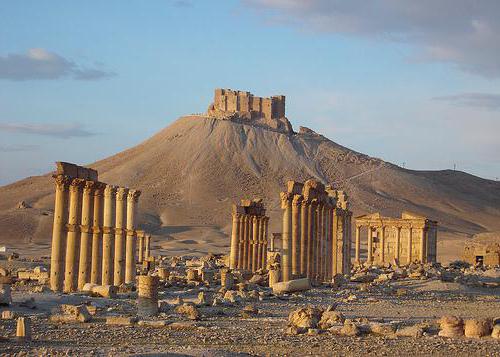 Satellite images confirm that this moment almost all the buildings on the site where the city of Palmyra used to be were wiped off the face of the earth. Syria is still in a state of armed conflict, so it is not known whether this terrible war will leave any monuments for our descendants.
Satellite images confirm that this moment almost all the buildings on the site where the city of Palmyra used to be were wiped off the face of the earth. Syria is still in a state of armed conflict, so it is not known whether this terrible war will leave any monuments for our descendants.






